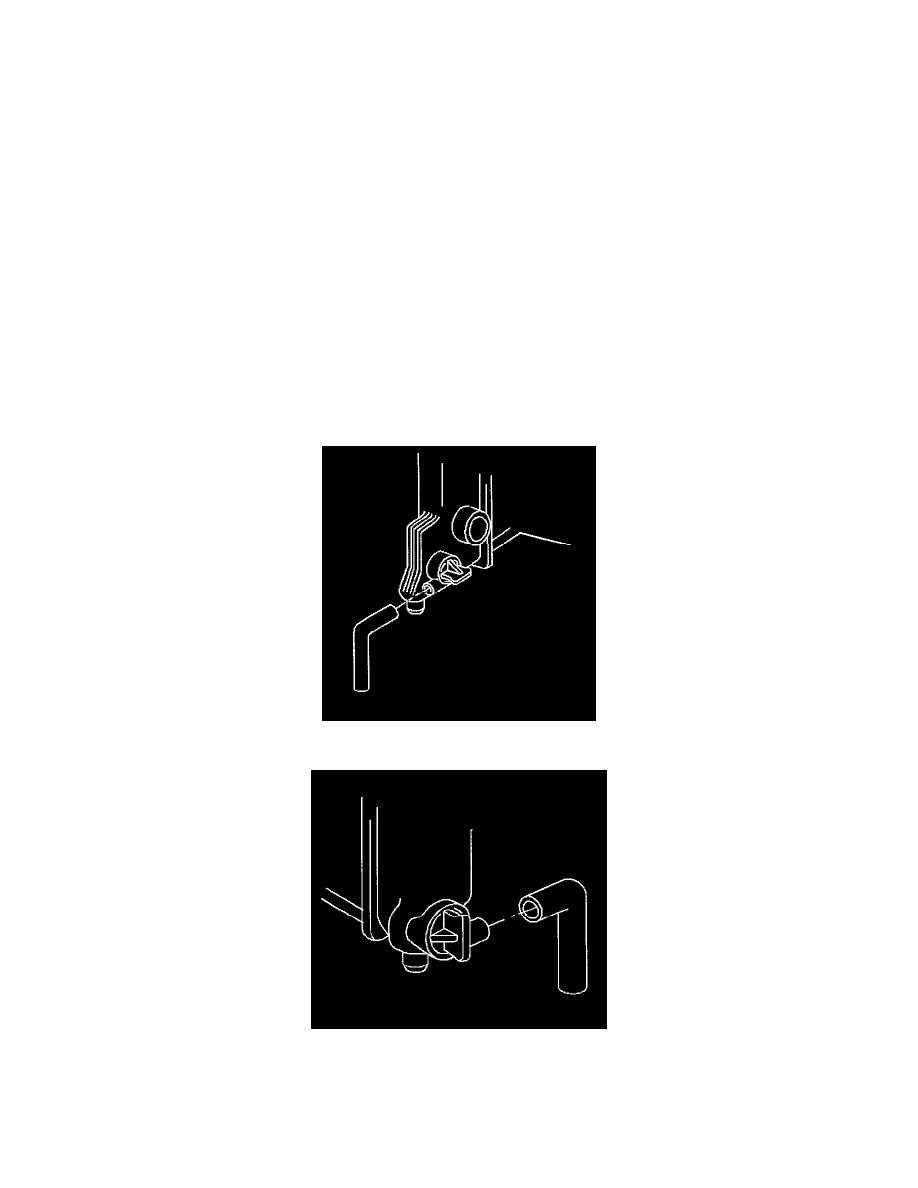Hombre S Regular Cab 2WD L4-2.2L CPC (1998)

Coolant: Service and Repair
DRAINING PROCEDURE
CAUTION: To avoid being burned, do not remove the radiator cap or surge tank cap while the engine is hot The cooling system will release
scalding fluid and steam under pressure if radiator cap or surge tank cap is removed while the engine and radiator are still hot.
CAUTION: As long as there is pressure in the cooling system, the temperature can be considerably higher than the boiling temperature of the
solution in the radiator without causing the solution to boil. removal of the radiator cap while the engine is hot and pressure is high will cause the
solution to boil instantaneously-possibly with explosive force-spewing the solution over the engine, fenders and the person removing the cap.
Under some conditions, the ethylene glycol in the engine coolant is combustible.
CAUTION: An electric fan under the hood can start up even when the engine is not running and can injure you. Keep hands, clothing and tools
away from any underhood electric fan.
ENGINE COOLANT RECYCLING
The use of a waterless coolant recycling system on the vehicle eliminates the need for evacuation. This method removes the used coolant and replaces
it with approved new or with recycled coolant. When this equipment is not available use the following procedure.
NOTICE: Do not add cold water to the cooling system with the engine at or above operating temperature. Adding cold water causes rapid
cooling, resulting in possible engine damage.
1. Make sure the system has cooled, then remove the radiator filler cap.
2. Place a drain pan under the radiator drain cock.
3. Install a tube on the drain cock.
4. Place the end of the tube in the drain pan.
5. Open the drain cock completely.
6. Allow the cooling system to drain until the flow stops. If only the radiator is drained, up to 40% of the old coolant will remain in the system.
7. Place a drain pan under the engine.
